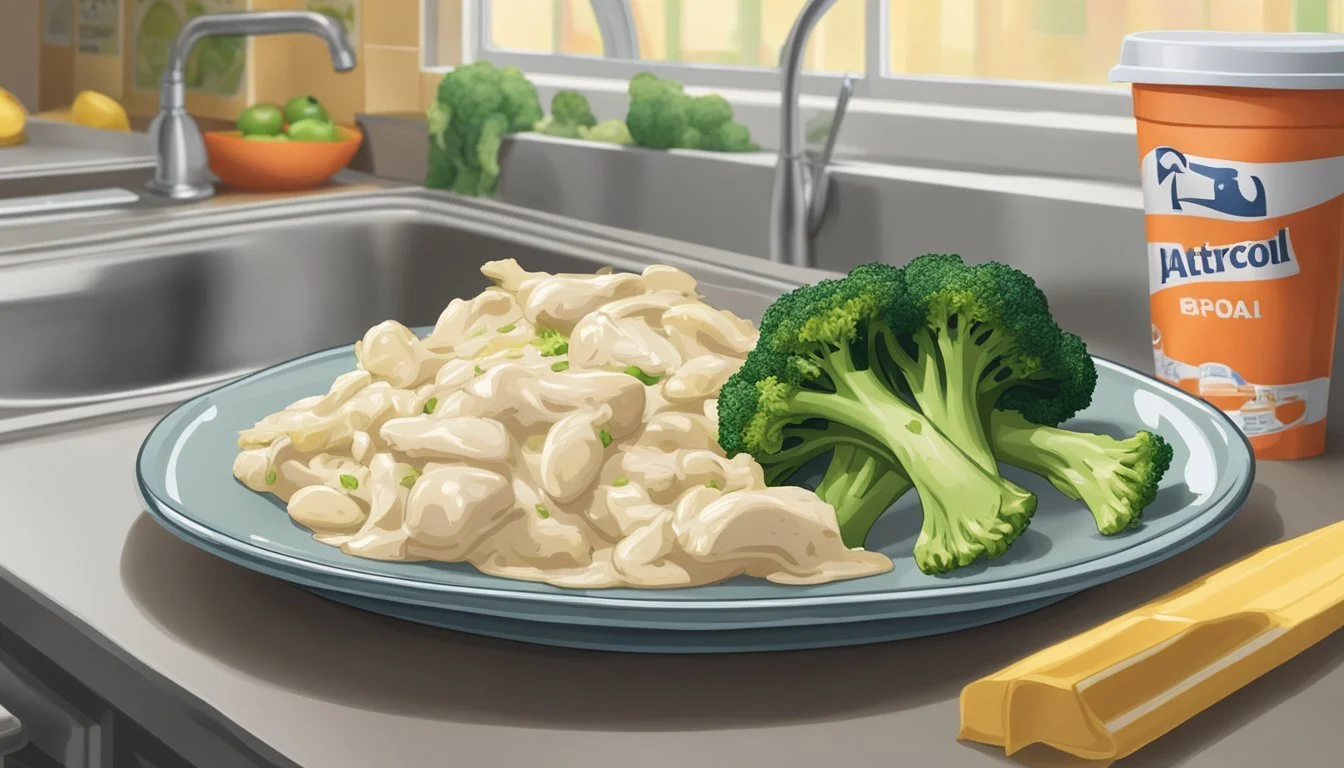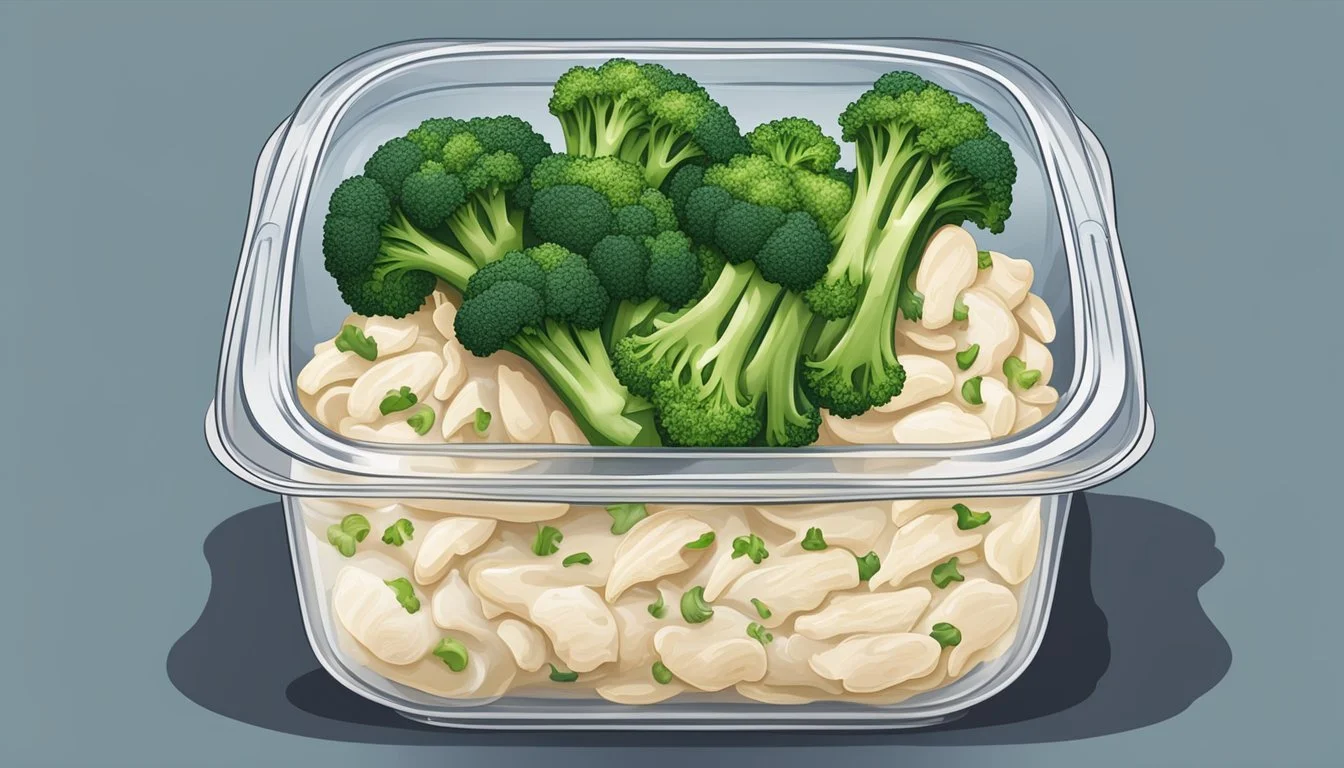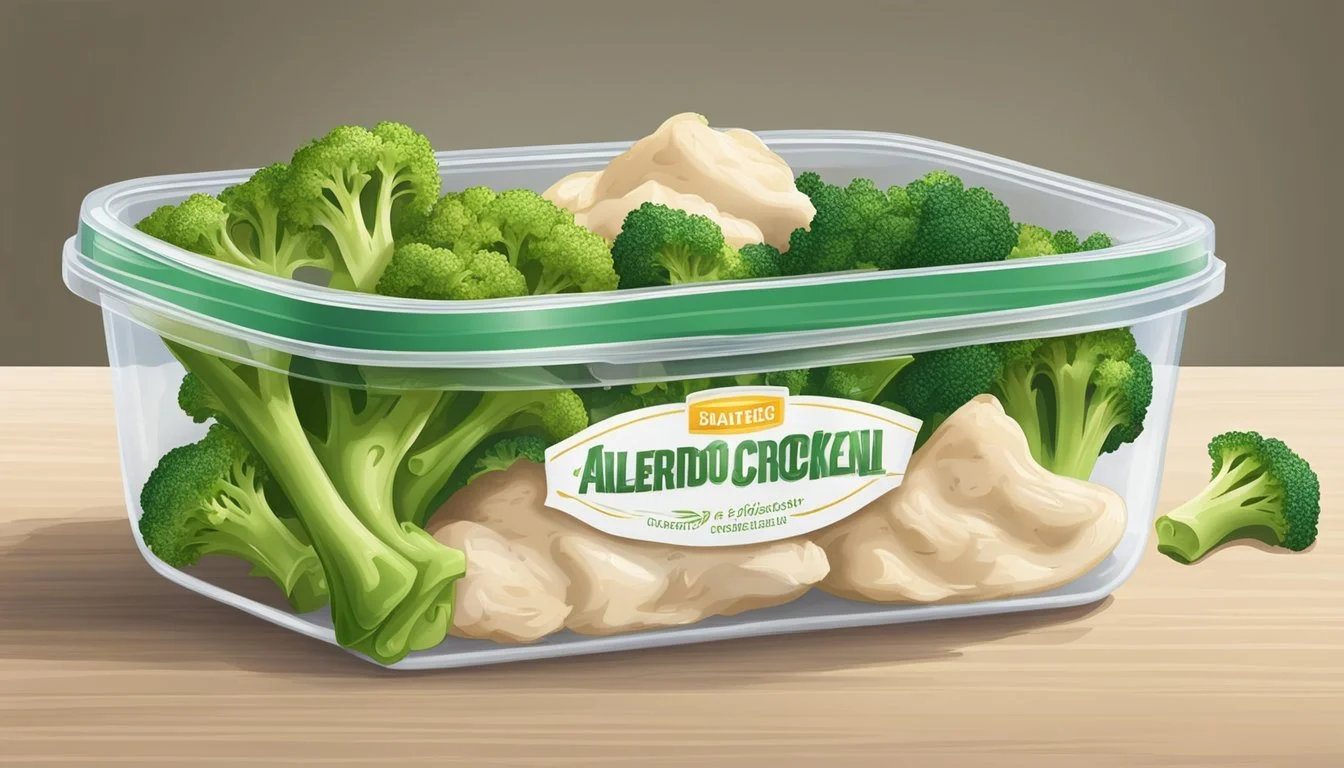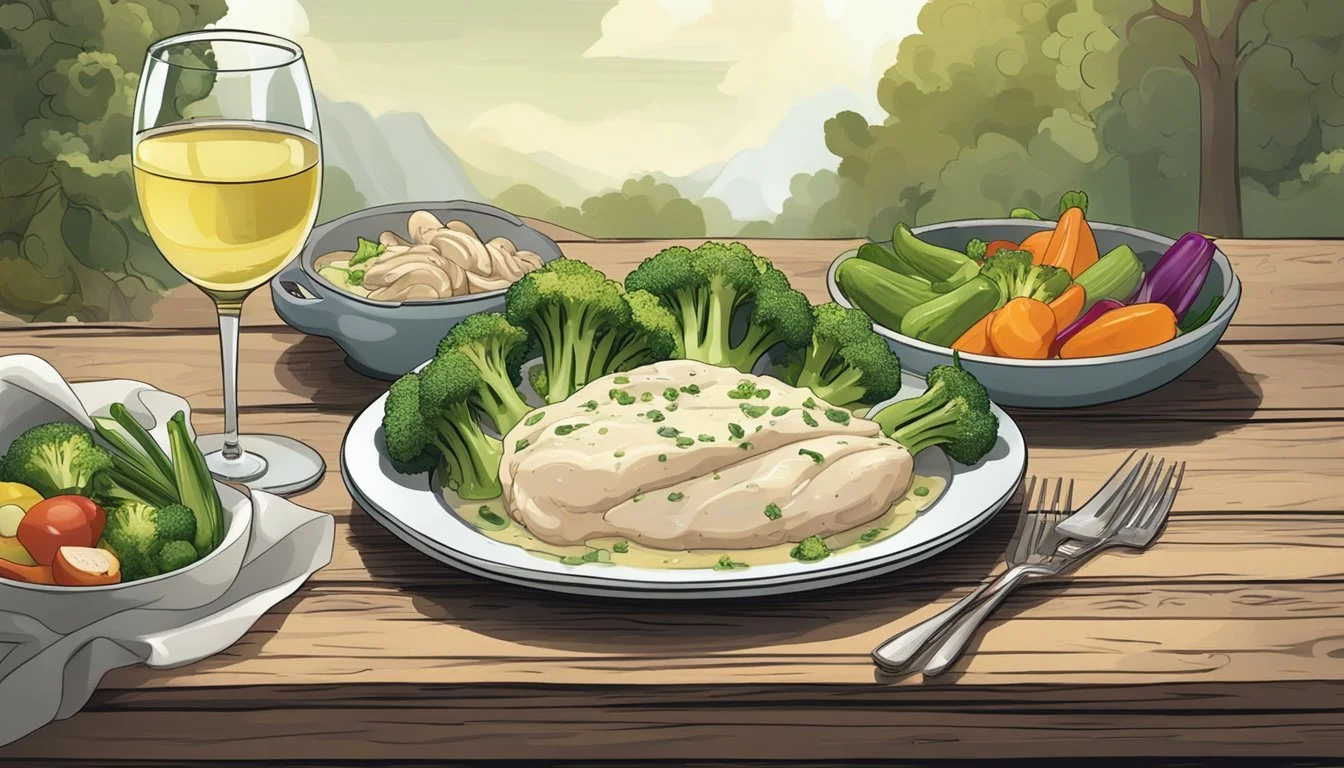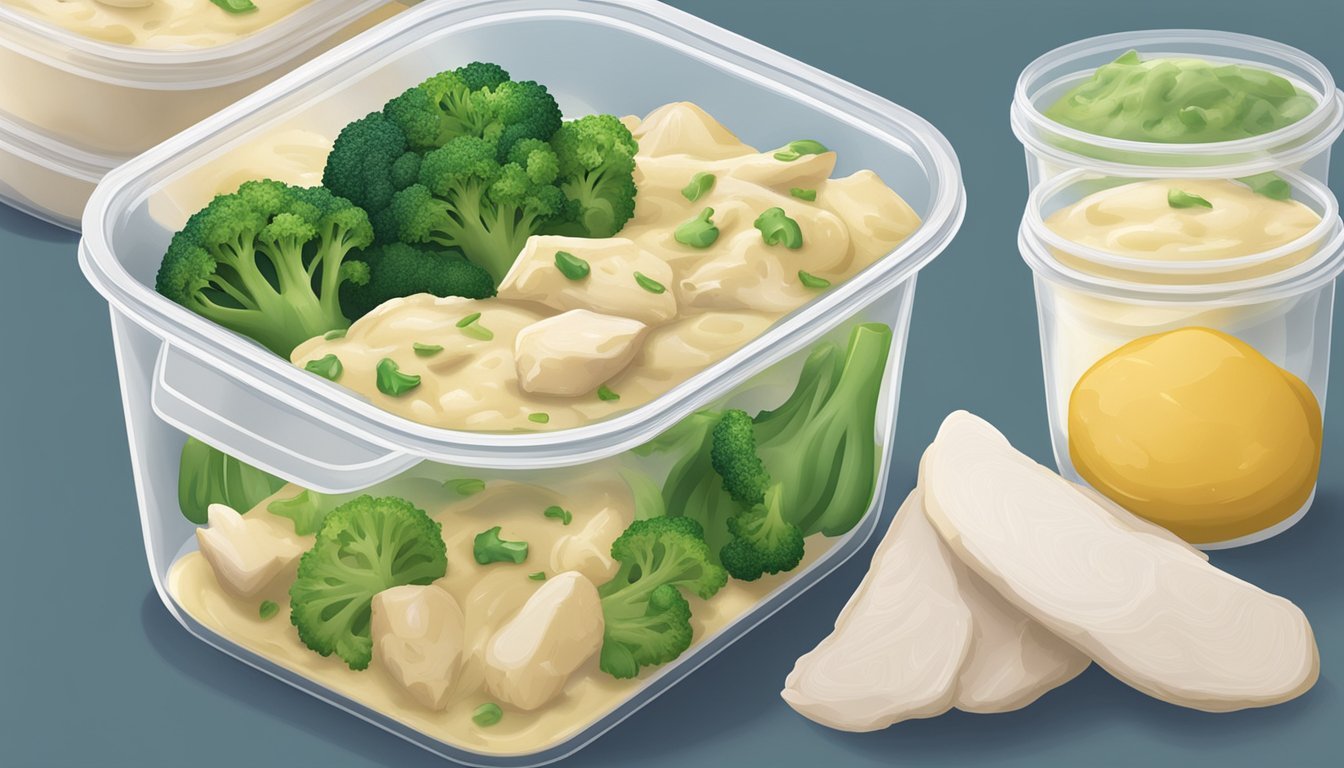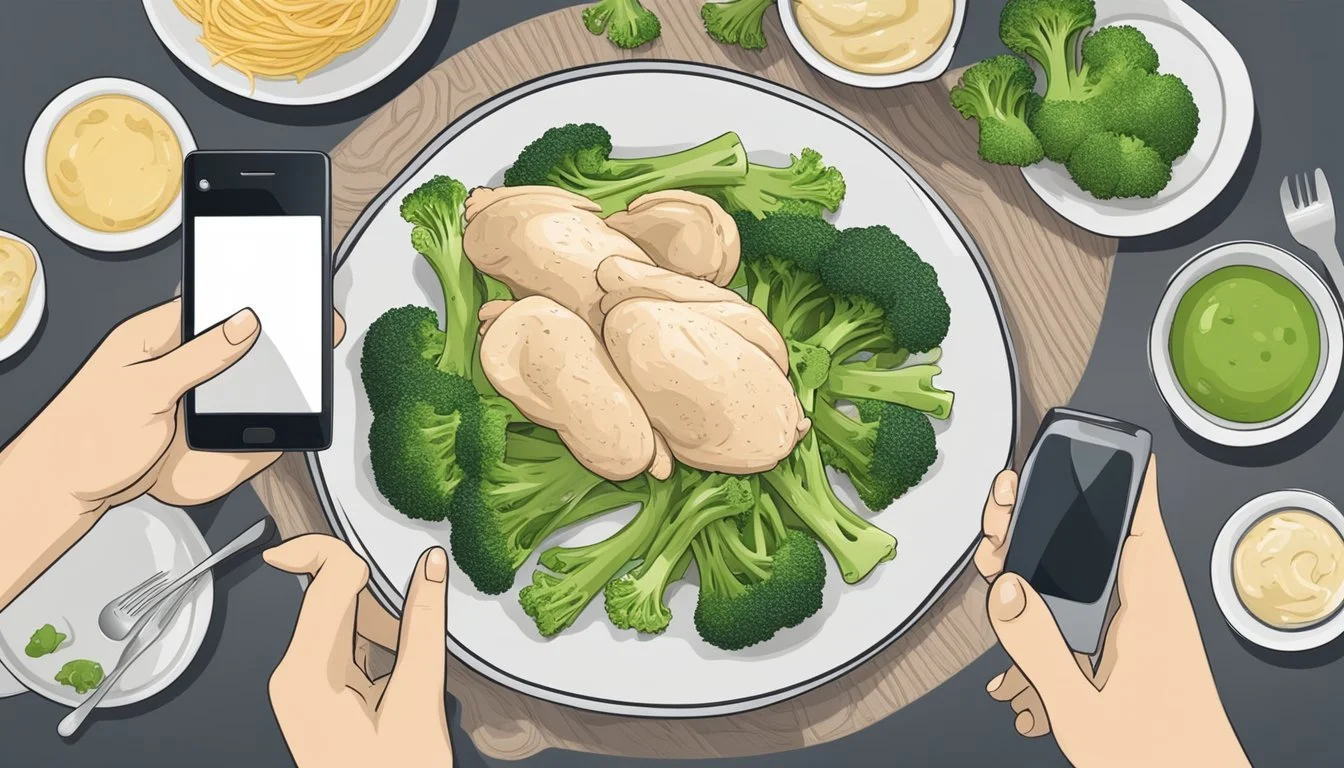How Long Does Alfredo Chicken and Broccoli Last?
Storage Tips and Shelf Life
Chicken Broccoli Alfredo is a delicious and hearty meal that many enjoy for dinner and beyond. Knowing how long this dish lasts is crucial to avoid food waste and ensure food safety. Chicken and broccoli Alfredo can last in the refrigerator for up to three to four days when stored properly in an airtight container.
It's important to refrigerate the Alfredo within two hours of cooking to maintain its freshness and flavor. Proper storage not only extends the life of your leftovers but also preserves the creamy texture of the Alfredo sauce and the tenderness of the chicken and broccoli. Reheating should be done thoroughly to ensure the dish is safe to eat.
For those who want to enjoy Chicken Broccoli Alfredo later, freezing is also an option. When frozen, the dish can last up to two months, although the texture of the Alfredo sauce might change slightly upon reheating. Making sure to label and date your containers can help keep track of the storage time, ensuring that each meal is as enjoyable as the first.
Understanding Chicken Alfredo
Chicken Alfredo is a beloved dish that combines flavorful ingredients to create a creamy and satisfying meal. This section breaks down the basic ingredients and examines the health and nutrition considerations.
Basic Ingredients
Chicken Alfredo starts with chicken breast as the primary protein source. Chicken is seasoned with salt and pepper, then cooked in olive oil for flavor.
Broccoli is often added to boost the nutritional value and provide a balancing texture.
Alfredo sauce, a rich mixture of butter, cream, and Parmesan cheese, forms the creamy base. The sauce also includes garlic for added aroma and taste.
For a thicker consistency, flour or a starch may be used to create a roux. Each ingredient plays a critical role, contributing to the dish's taste and texture.
Health and Nutrition
Chicken Alfredo is rich in protein from the chicken breast, making it a good source of muscle-building nutrients.
The broccoli adds essential vitamins and fiber, enhancing the dish's overall health benefits.
The alfredo sauce, while delicious, is high in fat and calories due to ingredients like butter, cream, and Parmesan cheese. Moderation is key, particularly for those monitoring their fat intake.
Carbs from pasta can provide energy but should be balanced with the dish's other components. For a healthier alternative, whole-grain pasta or a low-fat sauce can be used.
This meal can be a part of a balanced diet when paired with plenty of vegetables and consumed in reasonable portions.
Preparation Guidelines
Proper preparation ensures that Chicken Broccoli Alfredo is both delicious and safe to eat. Key steps include cooking the chicken thoroughly, preparing a rich Alfredo sauce, and combining all ingredients correctly for the best flavor and texture.
Cooking the Chicken
To start, use boneless, skinless chicken breasts or thighs. Season them with salt, pepper, and garlic powder. Heat about 2 tablespoons of olive oil in a large skillet over medium-high heat.
Add the chicken to the skillet and cook for about 3-4 minutes per side until the internal temperature reaches 165°F (74°C). Ensure the chicken is cooked through but not dry. Once done, let them rest for a few minutes before dicing into bite-size pieces. This resting period helps keep the juices within the chicken, enhancing its flavor.
Preparing the Alfredo Sauce
For a creamy Alfredo sauce, melt 4 tablespoons of butter in the same skillet over medium heat. Add minced garlic and sauté for about 30 seconds until fragrant. Gradually stir in 2 tablespoons of flour and cook for another minute until lightly browned.
Slowly whisk in 1 cup of chicken broth and 1 cup of heavy cream or cream cheese, continuing to stir constantly to avoid lumps. Add 1 cup of grated parmesan cheese and simmer until the sauce thickens and becomes smooth. Stir occasionally to prevent sticking.
Combining the Components
While the sauce simmers, cook your preferred pasta such as fettuccine or penne in salted water according to package instructions until al dente. Also, steam 2 cups of broccoli florets until tender but still crisp.
Drain the pasta and broccoli, then mix them into the Alfredo sauce along with the diced chicken. Ensure all components are well-coated with the sauce. Transfer the mixture to a baking dish if desired, sprinkle with extra parmesan, and bake at 350°F (175°C) for about 20 minutes until bubbly and slightly golden.
Serve hot for the best flavor and texture, ensuring all ingredients are well-integrated and at the right consistency.
Proper Storage
Proper storage of chicken Alfredo and broccoli is essential to ensure freshness and prevent foodborne illnesses. Following appropriate refrigeration and freezing techniques will help maintain the quality and safety of your leftovers.
Refrigeration Tips
Chicken Alfredo and broccoli should be stored promptly in the refrigerator within two hours of cooking. Use airtight containers to prevent contamination and moisture loss. The refrigerator temperature should be at or below 40°F (4°C).
Storing leftovers in smaller portions can help cool them faster and more evenly. Make sure to place the containers on shelves rather than in the door, where temperatures can fluctuate. Label containers with the date to keep track of freshness: chicken Alfredo and broccoli can last for 3-4 days in the fridge.
Freezing Techniques
For longer storage, chicken Alfredo and broccoli can be frozen. Use freezer-safe airtight containers or heavy-duty aluminum foil to prevent freezer burn. It is crucial to cool the dish completely before freezing to avoid raising the freezer's temperature.
Divide the recipe into serving sizes, making it easier to thaw and reheat only what is needed. The freezer should be at 0°F (-18°C) or lower to ensure the best quality. When properly stored, chicken Alfredo and broccoli can last for 2-3 months in the freezer. Label containers with the freezing date for better tracking.
Maximizing Shelf Life
To ensure that Alfredo chicken and broccoli stays fresh and safe to eat, proper handling and storage practices are essential. By knowing how to manage leftovers and recognize signs of spoilage, you can extend the dish's shelf life.
Handling Leftovers
Leftovers should be stored in airtight containers to minimize exposure to air and bacteria. Refrigerate them promptly within two hours of cooking, reducing the risk of bacterial growth.
Dividing the meal into smaller portions helps it cool faster, preventing prolonged exposure to room temperature. When reheating, the dish should reach an internal temperature of 165°F (74°C) to ensure safety. Use a microwave or oven, avoiding partial heating.
Ensure the broccoli and Alfredo sauce don't separate or become watery during storage. This can be done by storing the sauce separately if possible.
Signs of Spoilage
Spoilage can be identified by changes in texture, color, and smell. Fresh Alfredo chicken and broccoli should maintain a creamy consistency; a slimy or watery texture indicates it may no longer be safe to eat.
Check for any unpleasant or sour odors, as these indicate bacterial growth. Visible signs of mold, even in small amounts, mean the entire dish should be discarded.
Be mindful of the storage timelines: 3-4 days in the refrigerator or up to 2-3 months in the freezer. Do not consume leftovers that have been left unrefrigerated for more than two hours.
Serving Suggestions
When serving Alfredo Chicken and Broccoli, consider the accompaniments to enhance the meal, as well as presentation tips to make the dish visually appealing.
Accompaniments
Pairing Alfredo Chicken and Broccoli with the right sides elevates the meal. Garlic bread is a popular choice that complements the creamy sauce and provides a satisfying crunch.
For a lighter option, a fresh green salad with a simple vinaigrette helps balance the richness of the Alfredo. Additionally, steamed vegetables like carrots or green beans can add nutritional value and color to the plate.
Incorporating these items ensures a well-rounded dining experience that appeals to various tastes and preferences.
Presentation Tips
Presentation plays a significant role in making any dish appetizing. To serve Alfredo Chicken and Broccoli appealingly, start by arranging the chicken and broccoli on a large platter.
Drizzle the Alfredo sauce generously over the top, ensuring even coverage. Sprinkle chopped parsley as a garnish for a pop of color and freshness. Adding a twist of freshly ground black pepper enhances both appearance and flavor.
Serve the dish with warm garlic bread on the side, neatly arranged in a basket. Provide a small bowl of extra Parmesan cheese for guests to add as desired, completing the presentation and elevating the dining experience.
Customizing Your Dish
Customizing Alfredo Chicken and Broccoli can make the dish uniquely yours. Consider variations to ingredients or techniques that can enhance flavors or improve nutrition.
Ingredient Variations
Altering the ingredients can dramatically change the flavor profile and add unique touches to the dish. For a seafood twist, substitute chicken with shrimp or salmon. Both options pair well with the creamy Alfredo sauce and add a different texture.
For vegetarians, skip the chicken and add vegetables like spinach or mushrooms. Spinach adds a touch of color and a slight earthy flavor, while mushrooms provide a meaty texture. Front-loading the recipe with more broccoli or adding different veggies such as bell peppers can add variety and nutritional value.
Experiment with different pasta types beyond penne or fettuccine. Try using whole wheat pasta or even gluten-free alternatives to suit dietary needs. Consider using chicken thighs for a richer taste compared to the more commonly used boneless, skinless chicken breast.
Making the Dish Healthier
Simple modifications can make Alfredo Chicken and Broccoli healthier. Opt for a lighter sauce by using low-fat milk or a mix of low-fat milk and chicken broth instead of heavy cream. This reduces the fat content without sacrificing flavor.
Including more vegetables in the dish, such as more broccoli or adding spinach, increases fiber and nutrients. Reducing or eliminating the parmesan cheese can cut down on sodium and saturated fats. Instead, season generously with Italian herbs and garlic for flavor.
If you're monitoring your carb intake, consider using zucchini noodles or whole grain pasta instead of traditional pasta. These adjustments maintain the essence of the recipe while making it more suitable for those with specific dietary goals.
Troubleshooting Common Issues
When preparing Alfredo chicken and broccoli, getting the pasta texture and sauce consistency right is crucial. Addressing these aspects will ensure a delightful and satisfying dish.
Avoiding Overcooked Pasta
Cooking pasta to the perfect al dente texture is essential. Begin by bringing a large pot of salted water to a boil. Use 1 tablespoon of kosher salt per quart of water to enhance flavor. Add the pasta and cook according to the package instructions, typically between 7-10 minutes, tasting it a minute before the minimum time.
To prevent overcooking, immediately drain the pasta once it reaches the desired firmness and rinse briefly with cold water. This stops further cooking. If the pasta needs to be reheated, simply toss it in the sauce on low heat until warmed through. Overcooking makes pasta mushy and less enjoyable, so constant monitoring is key.
Achieving the Perfect Consistency
A creamy sauce is the hallmark of a good Alfredo dish. Start by simmering butter and garlic until aromatic. Gradually whisk in flour, cooking briefly to incorporate it. Slowly add in milk, half-and-half, or cream, stirring continuously to avoid lumps.
Let the mixture simmer on medium-low heat until it thickens. Adding freshly grated Parmesan cheese enhances the flavor and helps achieve a rich, velvety texture. Ensure to stir continuously and avoid high heat to prevent the sauce from separating.
If the sauce becomes too thick, gradually add a bit of chicken broth or reserved pasta water to reach desired consistency. Proper simmering and slow incorporation of ingredients are crucial steps for a creamy, lump-free Alfredo sauce.
Enhancing Flavors
To elevate the taste of Alfredo chicken and broccoli, consider making specific seasoning adjustments and adding various herbs and spices.
Seasoning Adjustments
Seasoning is crucial in achieving a flavorful dish. Salt, especially kosher salt, enhances the natural taste of the chicken and broccoli. Adjusting salt levels can make a significant difference.
For a slight heat and depth of flavor, add black pepper and red pepper flakes. The combination of these spices can create a harmonious balance that complements the creamy Alfredo sauce.
If the dish feels too bland, a pinch of salt can often rectify that. Conversely, if the flavors seem overwhelming, reducing the amount of red pepper flakes may help tone it down.
Herb and Spice Additions
Herbs and spices can transform a dish dramatically. Fresh herbs like basil, parsley, and oregano add brightness and freshness to Alfredo chicken and broccoli. These herbs should be added at the end of cooking to retain their vibrant flavor.
For a more savory taste, consider dried spices such as thyme or rosemary. These spices add a robust aroma and complexity that pairs well with the creamy sauce.
Garlic, whether fresh or powdered, is another fantastic addition. It injects a rich, aromatic quality that enhances the overall flavor profile. Use it in moderation to avoid overpowering the dish.
Recipe Ideas
Pasta dishes like Chicken Broccoli Alfredo are incredibly versatile and can fit into both quick weeknight dinners and comforting favorites. Explore these straightforward ideas to use Chicken Broccoli Alfredo in different meal styles.
Quick Weeknight Dinners
Chicken Broccoli Alfredo can be tailored for busy evenings with minimal prep and cook time. Instant Pot methods streamline the process, using sautéed garlic and chicken, combined with cooked pasta and broccoli, for a tasty meal in less than 30 minutes.
For a faster option, try a skillet version where pre-cooked chicken and steamed broccoli are mixed with Alfredo sauce and fettuccine. Opt for store-bought Alfredo sauce to cut down on time. Serve with a simple side salad to complete the meal.
Ingredients:
Pre-cooked chicken
Steamed broccoli
Store-bought Alfredo sauce
Fettuccine pasta
Steps:
Cook pasta and drain.
Combine pasta, chicken, broccoli, and Alfredo sauce in a skillet.
Heat until warm and serve.
Comfort Food Favorites
For a cozy, indulgent meal, a Chicken Broccoli Alfredo bake fits the bill. Combine chicken, broccoli, and pasta in a rich, homemade Alfredo sauce. Transfer to a baking dish, top with Parmesan cheese, and bake until bubbly for a familiar comfort food with a crispy, cheesy finish.
Alternatively, prepare a one-pot fettuccine Alfredo simmering with freshly grated Parmesan and heavy cream. Add chicken and broccoli for a creamy, flavorful twist. This version appeals when craving a warm, hearty dinner.
Ingredients:
Chicken breast
Broccoli florets
Fettuccine pasta
Freshly grated Parmesan
Heavy cream
Garlic
Steps:
Cook pasta and set aside.
Prepare Alfredo sauce with garlic, cream, and Parmesan.
Mix sauce with chicken, broccoli, and pasta.
Bake until golden for a cheesy, comforting meal.
Food Safety Precautions
When handling Chicken Alfredo and Broccoli, it is crucial to avoid cross-contamination and ensure proper cooking temperatures to prevent foodborne illnesses. These steps help maintain food safety and freshness.
Cross-Contamination
Cross-contamination occurs when harmful bacteria or allergens spread from one food item to another. To prevent this, use separate cutting boards for raw chicken and vegetables. Wash hands, utensils, and surfaces with hot, soapy water after handling raw chicken. This reduces the risk of bacteria such as Salmonella and E. coli contaminating other ingredients.
Store cooked Chicken Alfredo and Broccoli in sealed, airtight containers to prevent exposure to contaminants. Always refrigerate leftovers within two hours to minimize bacterial growth. Label containers with the date to keep track of freshness and avoid consuming spoiled food.
Proper Cooking Temperatures
Cooking chicken to the correct internal temperature is essential for safety. Use a meat thermometer to ensure chicken reaches at least 165°F (74°C). Undercooked chicken poses a risk of foodborne illness from bacteria like Campylobacter and Salmonella.
When reheating Chicken Alfredo and Broccoli, heat until the dish reaches an internal temperature of 165°F. This ensures any bacteria present are killed, making the food safe to eat. Stir the dish thoroughly to ensure even heating, particularly when using a microwave.
Culinary Techniques
Preparing Chicken Broccoli Alfredo involves specific methods for cooking pasta and making a creamy sauce. The following sections cover these techniques in detail, highlighting key steps and important considerations.
Pasta Cooking Methods
Cooking pasta requires attention to time and texture. To achieve al dente pasta, which means “to the tooth” in Italian, cook it for the time indicated on the package, usually around 8-10 minutes. Use a large pot with plenty of salted water to prevent sticking and ensure even cooking.
Stir the pasta occasionally while it cooks. Once done, drain it in a colander but avoid rinsing, as this can wash away the starch that helps the sauce adhere. For added tenderness, cook the broccoli in the same pot during the last 3-4 minutes of pasta cooking time.
Sauce Preparation Basics
Creating a creamy Alfredo sauce involves a few crucial steps. Start by melting butter in a skillet over medium heat. Once melted, add minced garlic and sauté for about 30 seconds until fragrant. To thicken the sauce, sprinkle flour over the butter and garlic mixture, stirring continuously to avoid lumps.
Gradually whisk in chicken broth and milk, continuing to stir until the mixture is smooth and creamy. A key ingredient for flavor is grated Parmesan cheese, which should be added slowly and stirred until fully melted. Adjust seasoning with salt and pepper to taste.
For a richer texture, cook chicken pieces in the same skillet before making the sauce, then combine all ingredients once the sauce is ready. This unifies the flavors and ensures the chicken is moist and flavorful.
Social Sharing
Sharing your culinary creations can be a delightful way to connect with others online. Using platforms like Instagram and Pinterest can help highlight your Chicken Alfredo and Broccoli dish in visually appealing ways.
Instagrammable Moments
When it comes to Instagram, presentation is crucial. Arrange the Chicken Alfredo and Broccoli dish elegantly on a white plate to make the colors pop. Natural light can significantly enhance the photo quality, so consider taking your shots near a window.
Use hashtags like #foodie, #homemade, and #chickenalfredo to reach a wider audience. Stories can also be a powerful tool; share behind-the-scenes clips while you’re cooking. This creates an engaging narrative for your followers.
Adding a filter can make your dish appear even more appetizing. Avoid over-editing, as authenticity resonates well with audiences.
Pinterest Inspiration
Pinterest thrives on visual appeal and step-by-step guides. Create a vertical photo collage showing different stages of the Chicken Alfredo and Broccoli preparation. This format performs well on Pinterest’s feed.
Write a detailed description, including key tips like adding fresh herbs for extra flavor. Pinning during peak hours, usually in the evenings, can maximize engagement.
Creating a dedicated board for your recipes can attract followers interested in culinary content. Collaborate with other food bloggers to exchange boards, boosting visibility.



